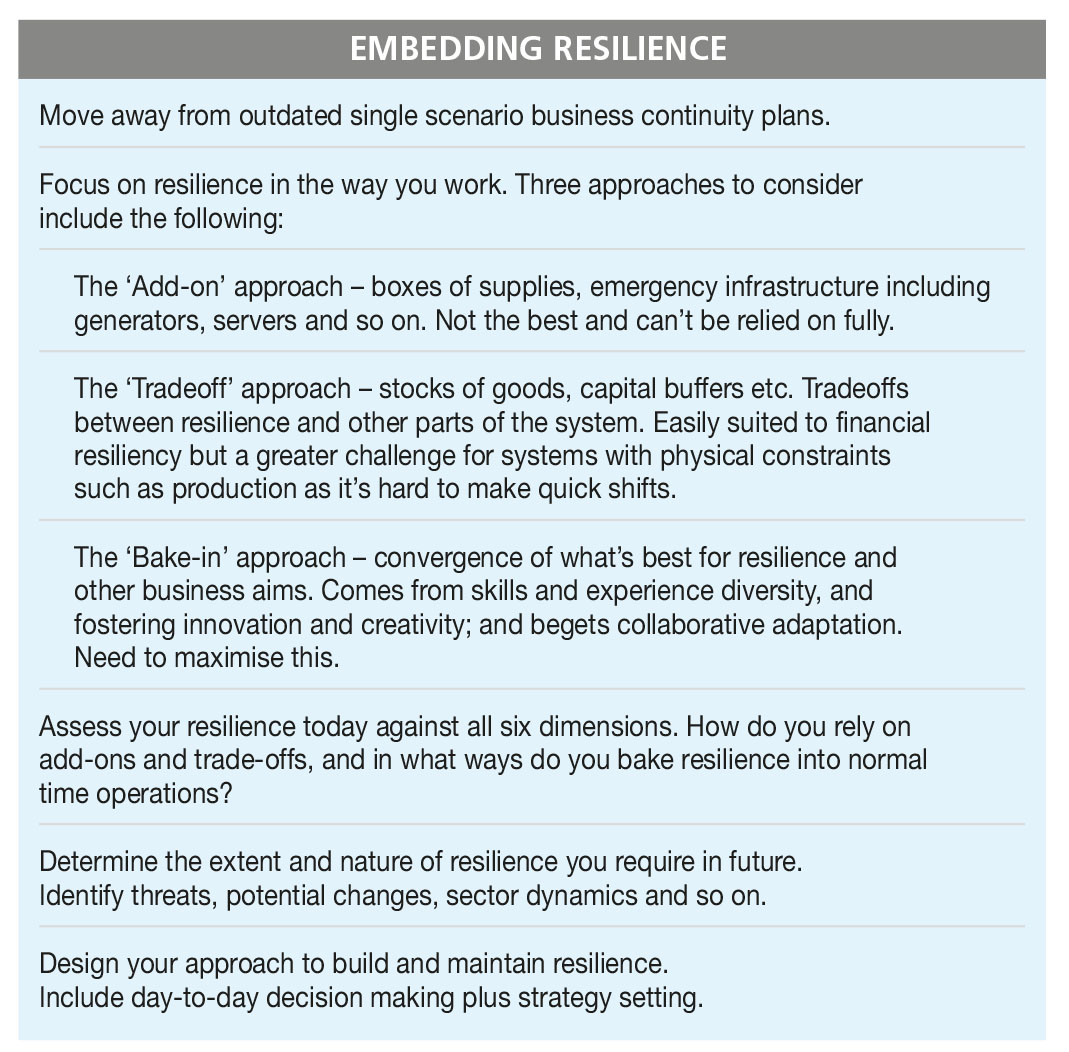PURPOSE FOR RESILIENCE
Being sustainable today for future resilience – Kiran Dhanapala

The most recent IPCC report is dire: we will live in an increasingly messy world of discontinuity and uncertainty – one where boundaries will become more complex and porous, resulting in less predictability overall. And it is our mess!
 Business leaders have highlighted five priorities for CEOs in the post pandemic ‘new normal’ as captured by a recent McKinsey & Company report. They include focussing an organisation’s strategy on sustainability, deployment and use of the cloud, cultivating tomorrow’s talent, designing for efficiency and intelligence, and operating with purpose.
Business leaders have highlighted five priorities for CEOs in the post pandemic ‘new normal’ as captured by a recent McKinsey & Company report. They include focussing an organisation’s strategy on sustainability, deployment and use of the cloud, cultivating tomorrow’s talent, designing for efficiency and intelligence, and operating with purpose.
These priorities have significant implications for business.
 Businesses will no longer be able to focus only on short and medium-term earnings as has been the case in the past. Limiting sustainability to investor and public relations, and corporate social responsibility with congruent activities of managing stakeholder communications, target setting and sustainability reporting will no longer suffice.
Businesses will no longer be able to focus only on short and medium-term earnings as has been the case in the past. Limiting sustainability to investor and public relations, and corporate social responsibility with congruent activities of managing stakeholder communications, target setting and sustainability reporting will no longer suffice.
Sustainability is a ‘must do’ rather than a ‘nice thing to do,’ and will be increasingly driven by consumers’ and regulators’ demands. Organisations will be systematically required to derive a long-term competitive advantage from this. And it will be interwoven with purpose, both organisational and individual, to build resilience.
Purpose is a company’s reason to exist and its unique contribution to society. It should be systemic, rational and emotional, as it needs to appeal to both the head and the heart. Purpose motivates employees to go above and beyond a salary.
Resilience is the ability to withstand unpredictable threats or changes and emerge stronger. This decade necessitates such a capacity, and resilience has to be built and invested in. It also requires new skills and ways of working.
A recent McKinsey article highlights the need for balance in six dimensions of resilience – viz. financials, operations, technology, organisation, reputation and business model.
Digitising implies speed and connectivity; but its risks include security and a speedy reputational fallout for companies. Corporate design, particularly in supply chains, needs to incorporate robustness and organisational health. While industries have developed specific capabilities related to resilience, there are surprising gaps that disruption reveals.
In the banking sector for instance, business continuity in the post-COVID era will need to enable WFH and flexible working hours, together with banking and data confidentiality. And for pharmaceuticals, it means the cluster risks associated with the supply of ingredients that are manufactured in India and China.
How well organisations embed sustainability, purpose and resilience in their day-to-day operations will determine their future in this decade.







